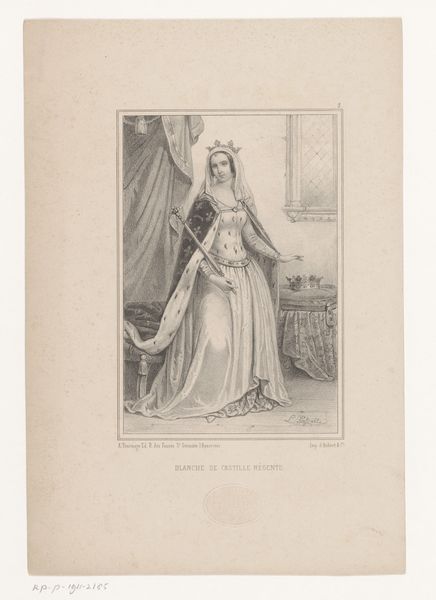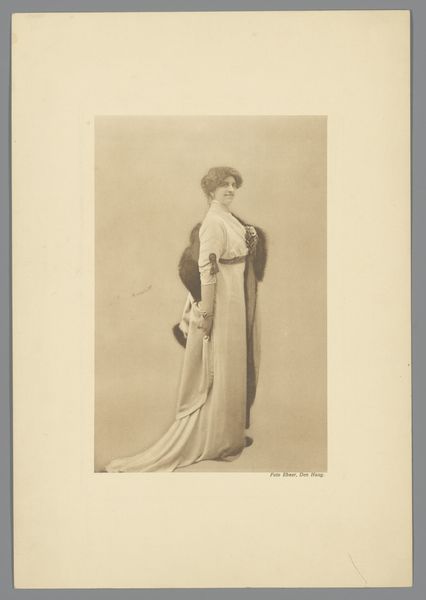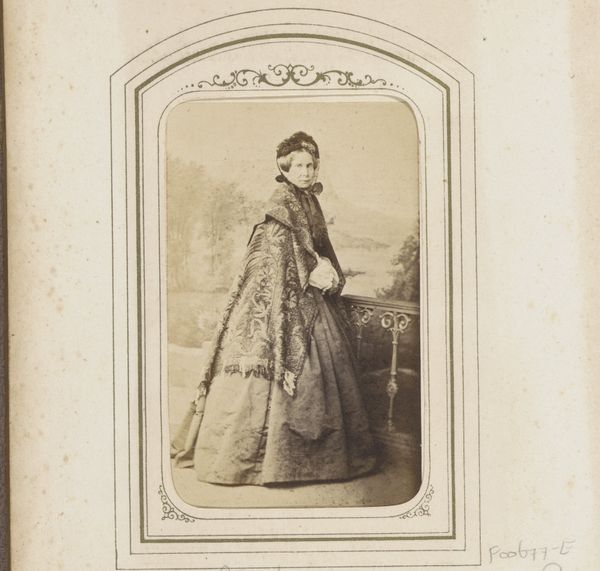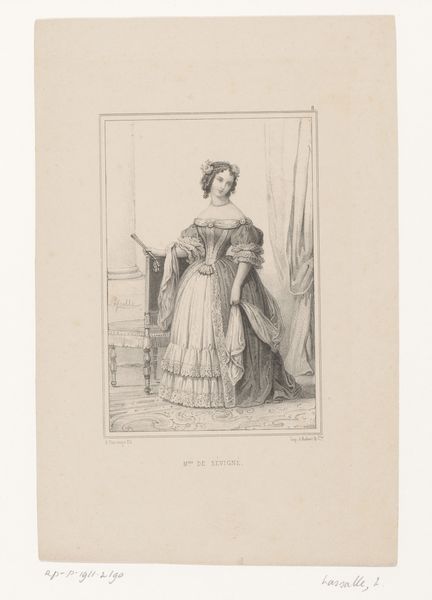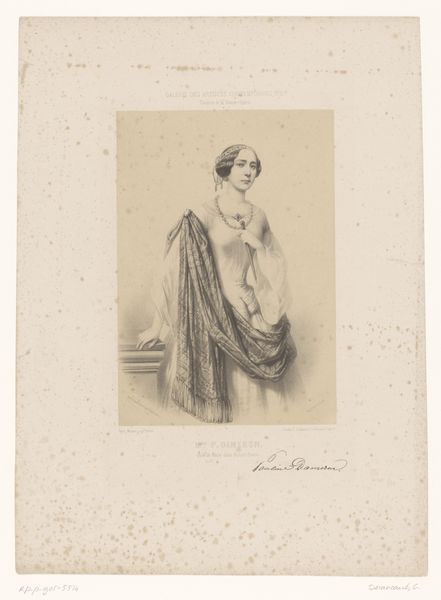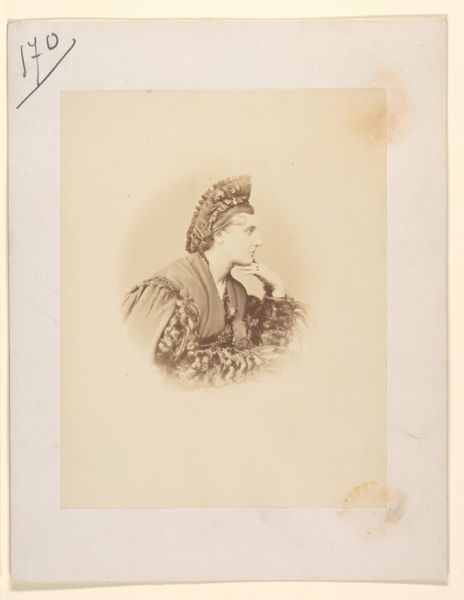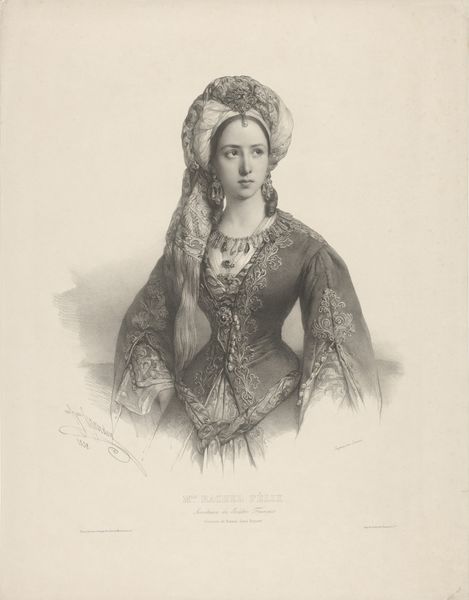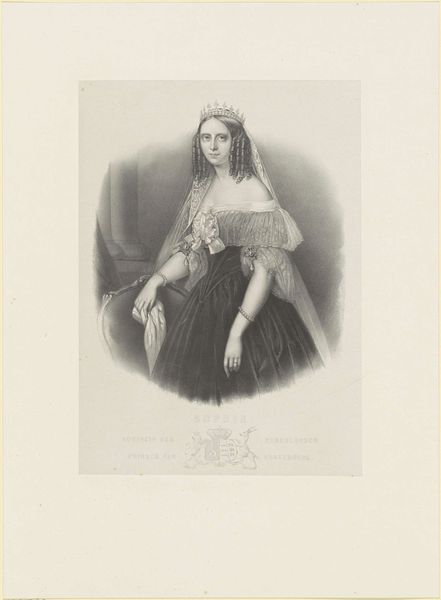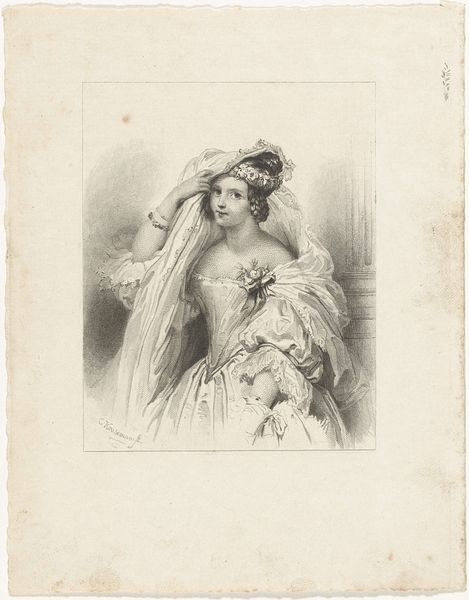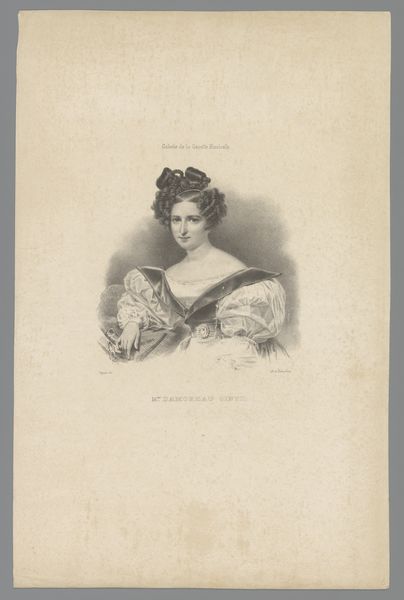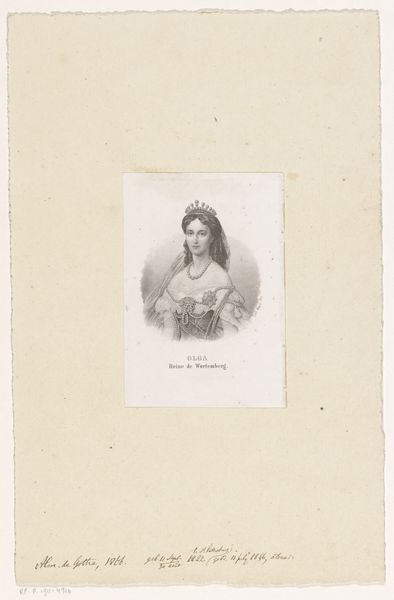
print, engraving
# print
#
history-painting
#
engraving
#
realism
Dimensions: height 396 mm, width 286 mm
Copyright: Rijks Museum: Open Domain
This portrait was made in the 1800s by C. Derancourt and depicts E. Masson as Johanna of Castile, also known as Juana la Loca, or Joan the Mad. Looking at this portrait, it’s important to consider the public role of art and the politics of imagery in 19th-century France. The lithograph was produced at a time when national identity and historical narratives were being shaped and reshaped. Joan of Castile was Queen of Castile from 1504 and Queen of Aragon from 1516, but she was deemed insane and imprisoned by her father and son. Why would this artist choose to depict her? In France, the figure of the ‘madwoman’ became a popular trope, particularly during the Romantic era, to explore themes of passion, suffering, and female victimhood. So, the artwork reflects the historical context of 19th-century France as well as the institutional histories that shaped the artist’s vision. To understand better, we might explore popular theatre and literature of the time and institutional records of the art market. These would give a fuller understanding of what the artist was trying to say.
Comments
No comments
Be the first to comment and join the conversation on the ultimate creative platform.


